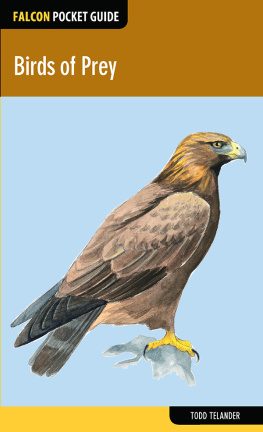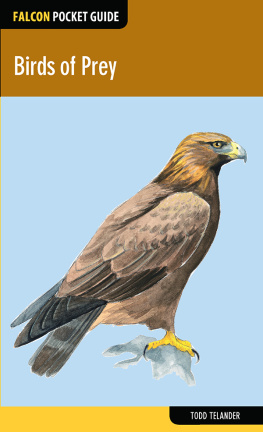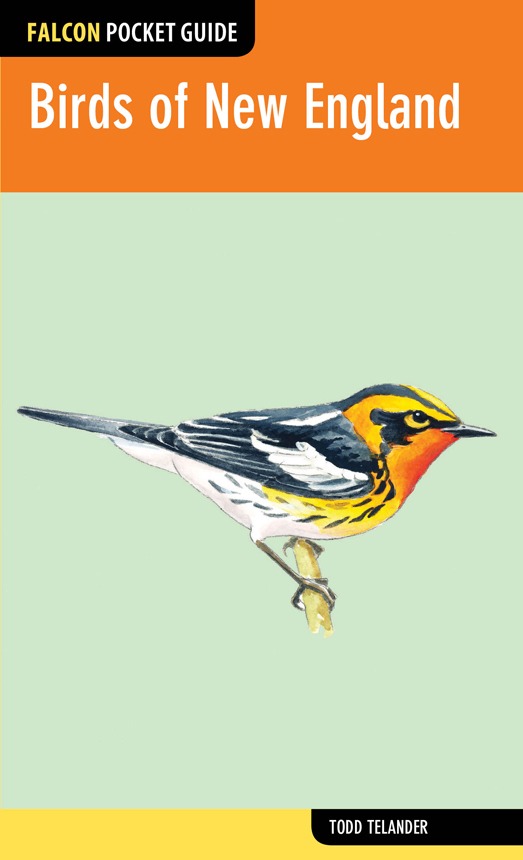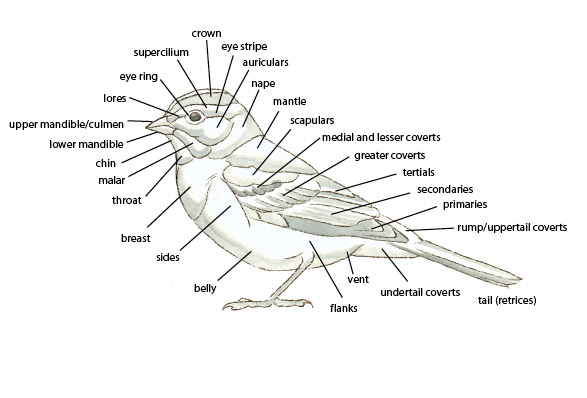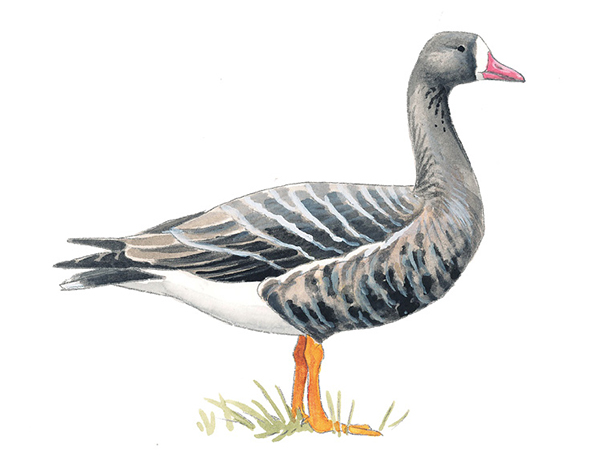Birds of New England
Todd Telander
To my wife, Kirsten; my children, Miles and Oliver; and my parents, all of whom have supported and encouraged me through the years. Special thanks to Mike Denny for his expert critique of the illustrations.
Copyright 2014 Morris Book Publishing, LLC
Illustrations 2014 Todd Telander
ALL RIGHTS RESERVED. No part of this book may be reproduced or transmitted in any form by any means, electronic or mechanical, including photocopying and recording, or by any information storage and retrieval system, except as may be expressly permitted in writing from the publisher. Requests for permission should be addressed to Globe Pequot Press, Attn: Rights and Permissions Department, PO Box 480, Guilford, CT 06437.
FalconGuides is an imprint of Globe Pequot Press.
Falcon, FalconGuides, and Outfit Your Mind are registered trademarks of Morris Book Publishing, LLC.
Illustrations: Todd Telander
Project Editor: Staci Zacharski
Text Design: Sheryl P. Kober
Layout: Sue Murray
Library of Congress Cataloging-in-Publication Data is available on file.
ISBN 978-1-4930-0731-8
Contents
Introduction
New England, the region of the United States that includes Maine, Vermont, New Hampshire, Massachusetts, Connecticut, and Rhode Island, is a region of vast diversity. It is bordered by the Appalachian Mountain chain on the west, Canada to the north, and the Atlantic Ocean to the east, and is marked by rolling hills, valleys, and lakesremnants of the last glacial age. Mountainous coniferous forests, lush deciduous woodlands, grassy valleys, and varied coastline all provide habitat for a vast number and variety of bird species. Because of its position on the globe, New England finds itself host to visiting birds from the Arctic, the open Atlantic Ocean, and Europe, as well as those that come north from tropical areas. Whether you are searching for shearwaters off the coast, puffins on rocky cliffs, colorful warblers in groves of spruce, or cardinals in city parks, this guide describes 300 species you are likely to encounter here and should give you a good start to your birding exploration and enjoyment.
Notes about the Species Accounts
Order
The order of species listed in this guide is based on the most recent version of the Checklist of North American Birds, published by the American Ornithologists Union. The arrangement of some groups, especially within the nonpasserines, may be slightly different than that of older field guides but reflects the most recent accepted arrangement.
Names
Both the common name and the scientific name are included for each entry. Of the two, the universally accepted scientific name of genus and species is the more reliable identifier because common names can vary by region and sometimes there may be more than one. Also, if you know a little Latin, you can often learn interesting facts about a bird from its Latin name. For instance, the wood thrush's scientific name, Hylocichla mustelina, derives from the Latin hylocichal, meaning of the forest, and mustelina, referring to the weasel-like color of its plumage.
Families
Birds are grouped into families based on similar traits, behaviors, and genetics. When trying to identify an unfamiliar bird, it can often be helpful to first place it into a family, which will reduce your search to a smaller group. For birds with which you are already familiar, try to understand what makes them fit into their particular family. Characteristics like bill size and shape, feeding behavior, and habitat preference can be remarkably consistent within a family. Then when you encounter an unfamiliar bird, you can make a pretty good guess as to which group it belongs to (or doesnt!).
Size
The size given for each bird is the average length from the tip of the bill to the end of the tail if the bird was laid out flat. Sometimes females and males vary in size, and this variation is described in the text. Size can be misleading if you are looking at a small bird that happens to have a very long tail or bill. It can be more effective to judge the birds relative size by comparing the size difference between two or more species.
Season
The season given in the accounts is the time when the greatest number of individuals occur in New England. Some species are year-round residents, some may spend only summers or winters here, and some may be transient, only stopping during the spring or fall migration. Even if only part of the year is indicated for a species, be aware that there may be individuals that arrive earlier or remain for longer than the given time frame. Plumage also changes with the season for many birds, and this is indicated in the text and illustrations.
Habitat
A birds habitat is one of the first clues to its identification. Note the environment (including vegetation, climate, elevation, substrate, presence or absence of water) where you see a bird and compare it with the description listed. This can be especially helpful when identifying a bird that shares traits with related species. For example, cattle egrets and snowy egrets are similar in appearance, but cattle egrets are found in drier fields and pastures, while snowy egrets prefer swamps and open water.
Illustrations
The illustrations show the adult bird in the plumage most likely to be encountered during the season(s) it is in New England. If it is likely that you will find more than one type of plumage during this time, the alternate plumage is also shown. For birds that are sexually dimorphic (females and males look different), illustrations of both sexes are usually included. Other plumages, such as those of juveniles and alternate morphs, are described in the text.
Bird Topography and Terms
Bird topography describes the outer surface of a bird and how various anatomical structures fit together. Below is a diagram outlining the terms most commonly used to describe the feathers and bare parts of a bird.
NONPASSERINES
Ducks, Geese, Mergansers
Greater White-fronted Goose, Anser albifrons
Family Anatidae (Geese, Ducks, Mergansers)
Size: Large but highly variable; 28"
Season: Winter
Habitat: Swamps, marshy areas, coastal fields
The greater white-fronted goose is a medium-size goose that breeds in the Arctic and migrates through New England on its way to southern wintering grounds. Its plumage is grayish brown above and on the head and neck, while its tail coverts and terminal tail band are white. The breast and flanks are barred with brown and black, and the bill is pinkish, bordered at the base by white along the front of the face (lacking in juveniles). The upper portions of the flanks form a thin white line. These geese forage for a variety of plants or small invertebrates in marshes or nearby fields. The adult is illustrated.


